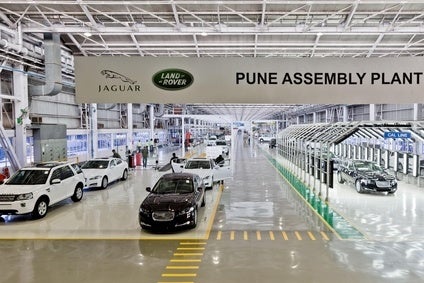The weekend’s news Tata Motors‘ Jaguar Land Rover is ‘talking to southern states’ about establishing a factory in the United States is an intriguing development and one that would make good sense both for the British automaker and its Indian parent.
I stress it’s not confirmed (we have ‘reached out’ to JLR, calls have not yet been returned) but, if the Brazilian plant build-up is any guide, reports such as this suggest there is no smoke without fire – there were numerous rumours and speculative reports long before that South American factory was, finally, announced officially and, even now, JLR has not confirmed what it will build when the plant opens in 2016.
JLR, both historically and currently, is, after all, no stranger to foreign assembly. Over the years, Land Rovers have been built in numerous countries and there was KD kit assembly of Jaguars in New Zealand in the 1950s and again in the 1970s with some exports to Australia under a free trade agreement. Jaguars have also been built in South Africa and there was some Range Rover build in Australia. More recently, there has been Freelander assembly in Thailand while the Tata plant in Pune, India, currently assembles the Freelander and some Jaguar XF and XJ variants from kits shipped from England. And Evoque production by a new joint venture with Chery – JLR’s single biggest overseas plant spend to date – kicks off in China tomorrow.
Making the business case for a manufacturing plant in the US surely won’t be too hard. There is a strong ‘build where you sell’ ethic amongst global automakers which has seen a slew of plants established worldwide in the last few decades in China, Thailand, the US (particularly in the south due to flexible local ‘unionisation’ laws), Canada, Brazil and Mexico.
A broad auto industry rule of thumb is that, to establish a full manufacturing plant (including at least body weld and paint shops, ideally also a pressing plant and plastic moulding in a second phase), you need at least 100,000 sales. JLR sold 55,000 cars in the US last year, an eighth of its 425,000 global sales. It’s targeting a million by 2020; an eighth of that is 125,000 US sales, without factoring in the likely boost from new models such as the recently announced Jaguar XE and Land Rover Discovery Sport and the additional Canada and Mexico volume opened up by building in the NAFTA free trade zone.
The plant likely would build the most popular models sold in NAFTA markets. In the US, 2014 to date, that’s currently the Range Rover Sport, Range Rover and Evoque.
JLR, becoming pushed for capacity here in the UK (hence the establishment of the XE sub-plant in the previously Land Rover-only plant in Solihull), could, conceivably, take a leaf from BMW and Mercedes’ book and make its US plant a key global supply hub for SUVs, a key market segment in the US and still growing in other markets such as Australia.
BMW and Mercedes’ southern plants have a variety of engine sourcing arrangements with some sourced locally and others imported. JLR likely would ship in engines from its new Wolverhampton plant, and other sources and perhaps add local build later – Mercedes is now sourcing engines for its Tuscaloosa-built Mercedes C-class from a new US plant built by a joint venture with Nissan’s Infiniti.
As the more recent ‘transplants’ in the southern US show – Hyundai Alabama, Kia Georgia and VW Tennessee – the local welcome is likely to be generous. Where traditional industries have withered and skilled workers are under-used, the state governments’ line goes something like this: ‘You need land, we got land, you need tax breaks, we can make that happen, you need infrastructure, we’ll sort those motorway junctions and rail spurs, you need skilled workers, we’ll work with you on that’.
To see what I mean, in Google Earth search for ‘Volkswagen Group of America Chattanooga Plant, Chattanooga, TN, United States’ and turn on the ‘historical imagery’ option. Click the slider back to when the plant site was a near-derelict former military ordnance storage centre. Slide forward to today and see what’s there now, note the specially constructed freeway offramps, imagine the direct (and indirect) jobs the plant and adjacent suppliers created for the state, the training institutions such investment supports – and all the other benefits such as a huge boost to the local tax take – and see why state officials will crawl over broken glass if necessary to secure such an investment.
JLR, if it goes ahead with its plant, will find itself very welcome in the south.






